Archive for the ‘2. Mythica’ Category
Mythica – the Product
A Warriors Dreams
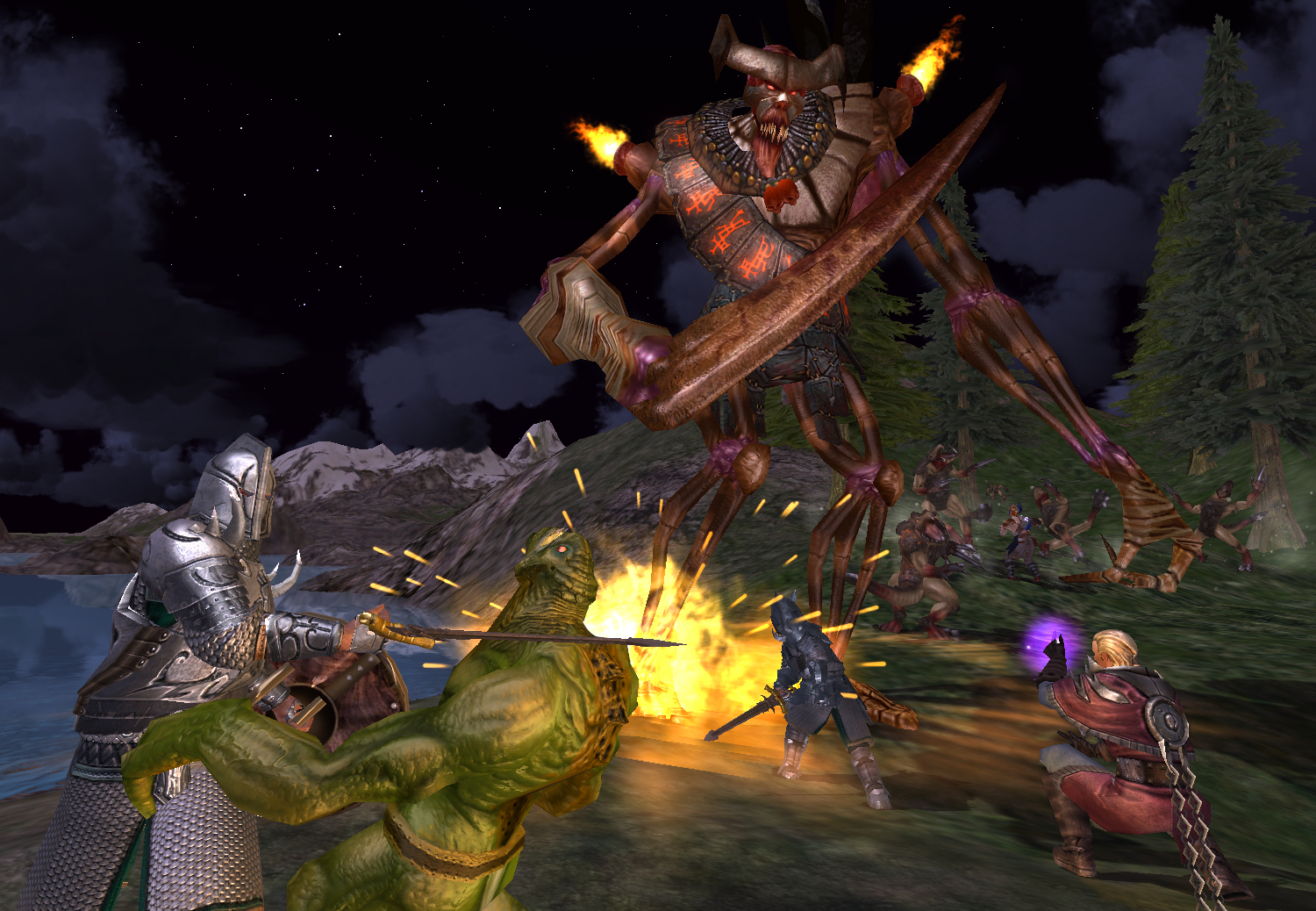
Group combat in Mythica, circa 2003.
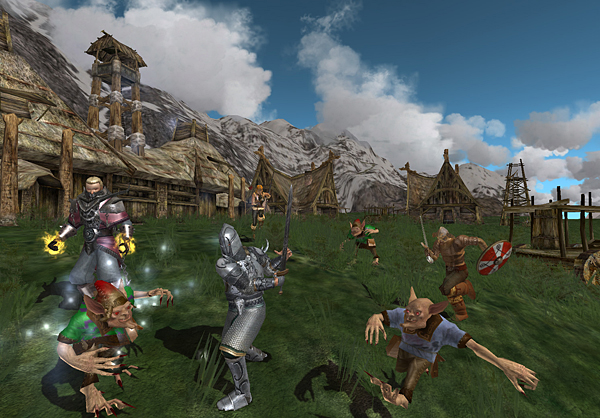
Midgard outpost besieged by Hulderfolke
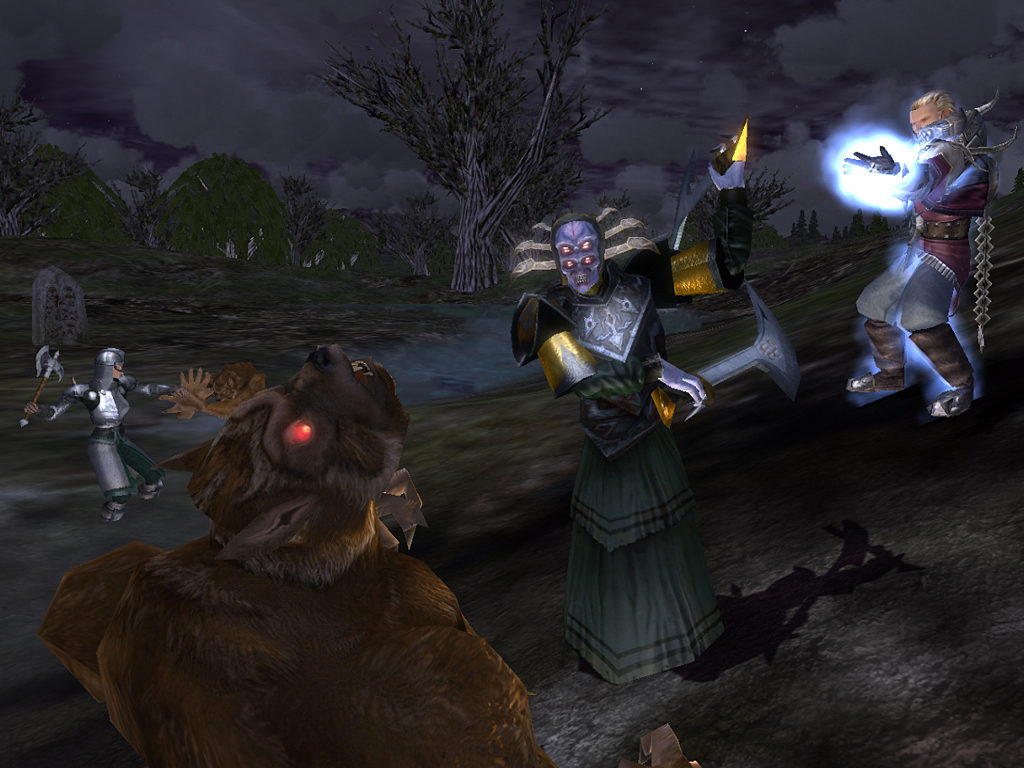
A good look at the Demonologist in action
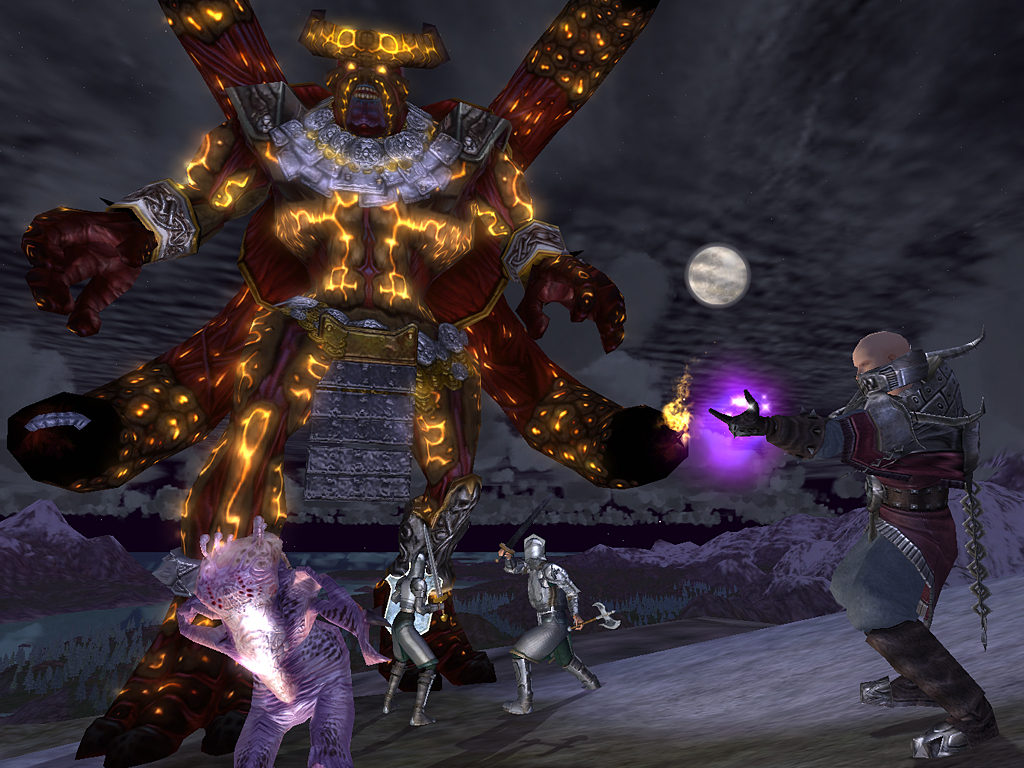
Battling a massive Fire Giant
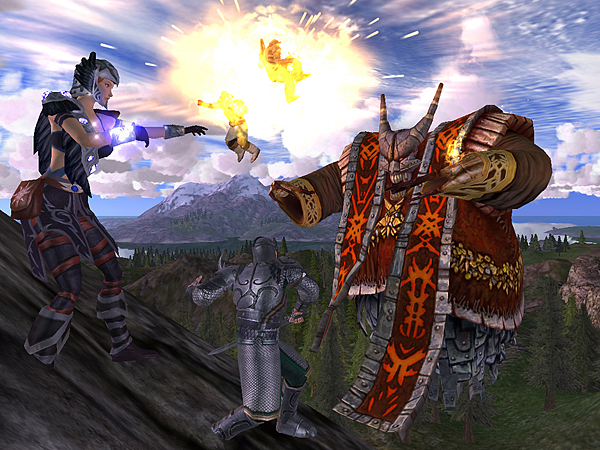
Stormwright and Warrior take on a Fire Giant Siege Caster
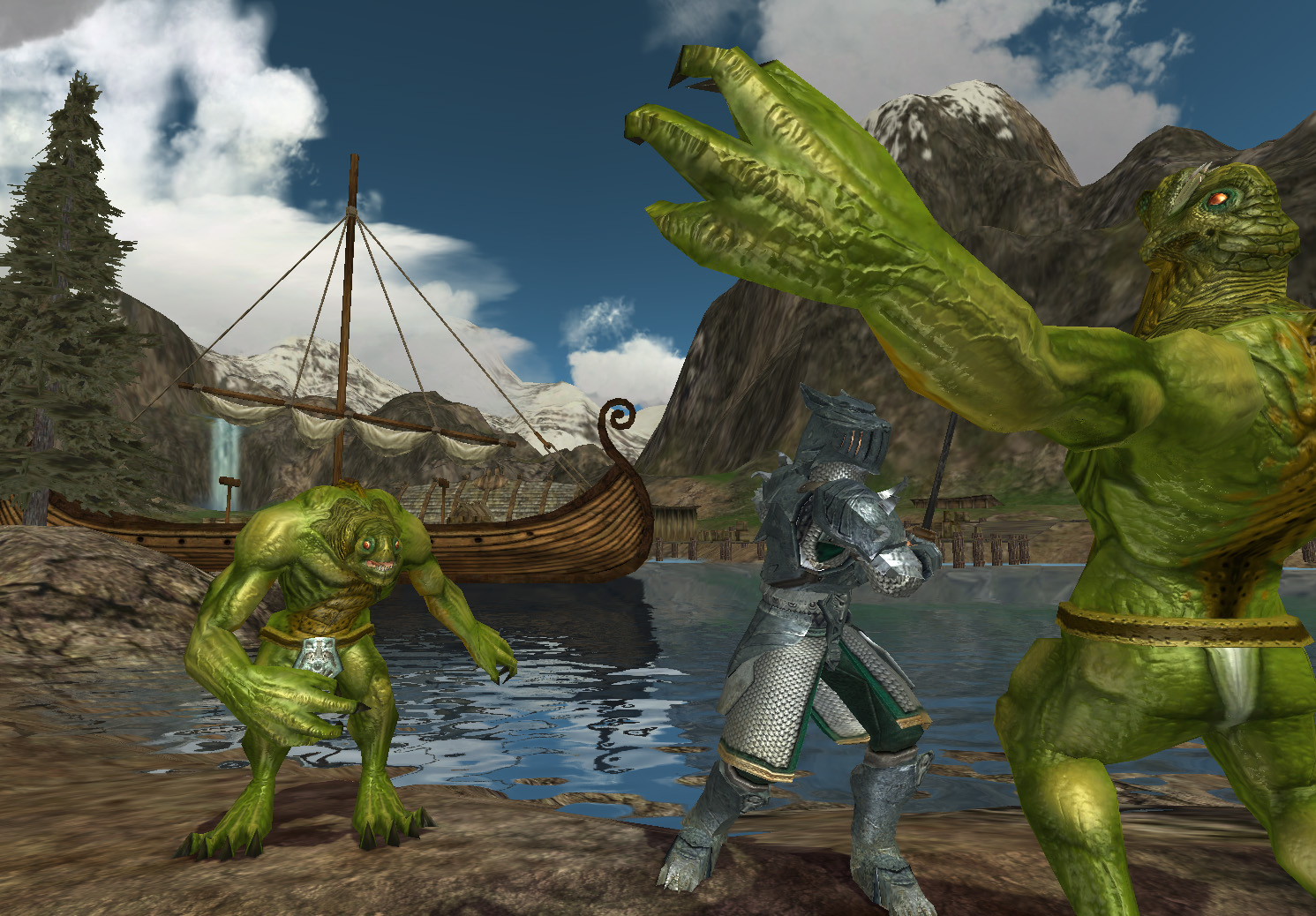
Up close and personal with a high level warrior
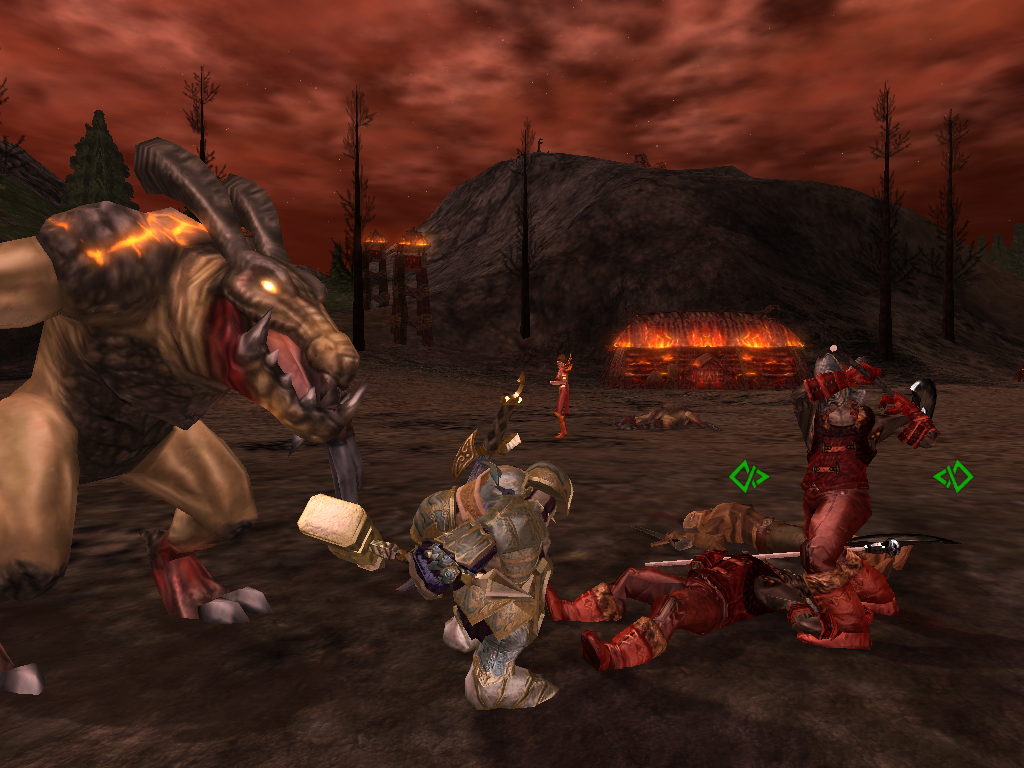
Creepers and Corruption are no match for this hero. Dwarf Smash!
To be honest, screenshots are great and everything but seeing the game in action is much better. The following link is a reprise of one of the quests we showed at E3 in 2003.
technical mumbojumbo
Mythica was graphically high-tech for it’s time but predated composite dynamic lighting models, ambient occlusion maps, or even tangent based normal maps. We essentially had an early version of a spherical harmonic light map, meaning we got a directional light vector for the dominant light source (either the sun or the moon as it tracked across the sky), an ambient omni-directional light value, and a bounce light value that pointed back at the sun/moon. Dynamic lights were costly and we used them very, very sparingly. Characters would cast shadows on the ground but not self-shadow, and because the light source moved we had no shadows from static objects. All models had the standard diffuse, specular, and normal maps, although our normal maps were painted height fields converted to normal data out of production considerations (this was pre-Zbrush or Mudbox). We also had a detail normal map that provided additional surface detail at close proximity. Most of the models in the game were under 2000 polygons, with high level heroes and boss monsters approaching twice that.
Mythica used a proprietary engine developed by the superbly talented programmers at Microsoft. Our dynamic weather system came from MS Flight Simulator, our water from Microsoft Research. The global lighting system was incredibly (possibly overly) complex, simulating atmospheric density and color distortion. The tech in the game was great, the art (if I do say so myself) was great, and the gameplay was really quite revolutionary for an MMO. We had, at most, a year left on the project but a change in business focus for MGS meant that we never got to finish. Mythica is still remembered annually on the lists of Best Games that Never Shipped.
art direction in action
Regardless of technological boon or limitation, Art Direction comes down to encouraging solid fundamentals: Legible silhouettes, dimensional volumes, excellent craftsmanship of painted textures, fluid animation, good light play on surfaces, and creating an evocative mood. I worked with artists daily to make sure output was of a high standard. I even submerged into environment lighting to ensure each realm really captured the proper tone.
I’ve mentioned that we had a fantastic concept art team, but the really impressive thing was how artists like John Shroades, Greg Onychuk, RK Post, Patrick Watje, and Adam Crockett were able to bring those monster concepts to life as 3D models. Leigh Kellogg and Gene Kohler nailed the outfits and character models, creating sexy and powerful heroes. Michael Cahill, Gene Kohler, Rob Johnson, Jim Millar, and Deanna McGahan built lush worlds for the action to take place. Steve Scott made incredible special effects (and he modeled and textured some great creatures as well). And the animation team (Robert Smiley, Mary K Omelina, and Theron Benson) created an incredible range of expressive and powerful motion, bringing everything to life. The team really captured all the excitement of the concepts and it was a tremendous honor to lead them.
Mythica – the Process
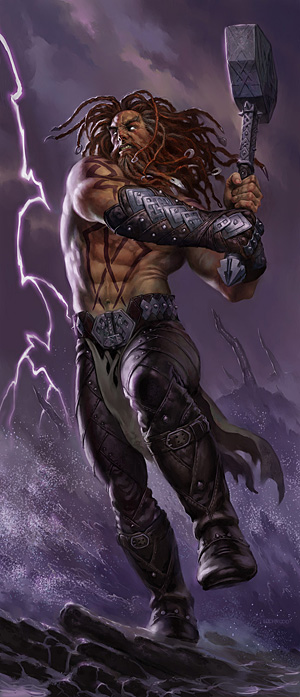
it starts with a concept…
Mythica was about living the afterlife of a fallen Norse hero, leaving behind Asgard and the Halls of Odin to do battle against the fire giants. The player was but one of many such heroes brought back into the mortal world to gather human followers and defeat the rising tide of corruption devastating the many realms of the Norse pantheon. To support such an ambitious idea it was critical that we elevate the world of Norse Mythology beyond merely a Viking life simulator. We needed to bring a sense of wonder and mystery to the environments, create a vast wealth of fantastic monsters and creatures, and design several attractive avenues for players to pursue on their way to becoming a Norse God! Piece of cake.
One of the most important tools for an art director is quality concept art. Concepts should do more than just inform the production staff about what they’re about to build. Great concept art inspires and provides clarity for the entire team. Remarkably, Wizards of the Coast had assembled a large group of world-class talent right in our own back yard and recently let a bunch of their staff artists go. We contracted the inimitable Sherry Floyd to help corral some of my favorites and we were off and running. Many of the folks, including Sherry, had just finished doing a marvelous job of upgrading the look of the venerable Dungeons and Dragons franchise so they were absolutely perfect for a Norse Mythology face lift.
With a strong concept team secured I was able to deeply engage with the designers (Hal Milton, Tony Iuppa, and Joel Manners) to flesh out back story, identify key elements specific to regions for establishing mood and tone, and create a visual system to differentiate roles and ranks for players. The team created hundreds of glorious concepts, with incredible pieces from the likes of Sam Wood, RK Post, John Shroades, Anthony Waters, Brian Snoddy, Greg Onychuk, Leigh Kellogg, Rob Johnson, Michael Cahill, Scott Fischer, Todd Lockwood, Anthony Waters, and Dana Knutson.
created in Odin’s image, the aesir
Norse mythology is full of bold, iconic characters. Tyr, Odin, Thor, and Freya…characters so potent that we utter their names when we talk about days of the week (Tuesday derives from Tyr’s Day, Wednesday from Odin’s day, Thursday is Thor’s day, and, yup, Friday belongs to Freya). It was absolutely vital to not only create compelling depictions of these deities but also to elevate their immortal brethren, the Aesir. Some examples follow…
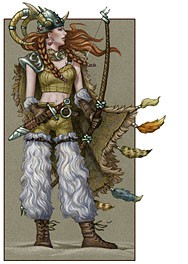 |
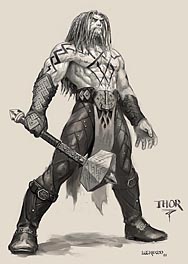 |
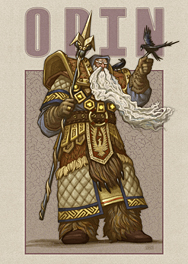 |
| concept: John Shroades | concept: Todd Lockwood | concept: John Shroades |
|---|---|---|
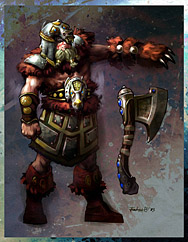 |
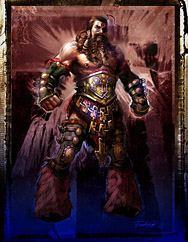 |
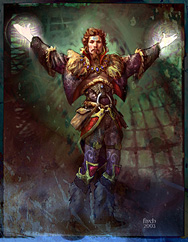 |
| concept: Scott Fischer | concept: Scott Fischer | concept: Scott Fischer |
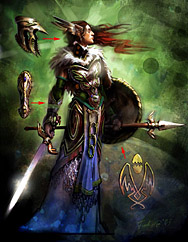 |
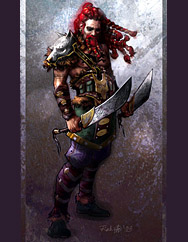 |
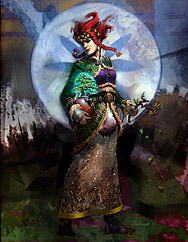 |
| concept: Scott Fischer | concept: Scott Fischer | concept: Scott Fischer |
Mythical Realms
The lands visited by our heroes ranged from frozen wastelands to lush, tropical forests. I wanted each Realm to embody a specific theme with it’s own color palette and signature shapes (both natural and manufactured) to make each place feel iconic and memorable. Midgard was rustic but charming; Jotunheim, frozen and blustery; Asgard, autumnal and warm; Nidavelir, dark and wet and underground; Muspelheim, scorched and foreboding; and Vanaheim, lush and exotic.
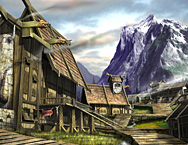
| 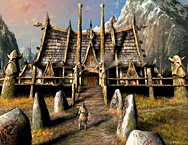 |
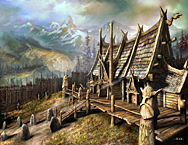 |
| concept: Rob Johnson | concept: Rob Johnson | concept: Rob Johnson |
|---|---|---|
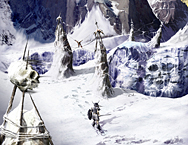
| 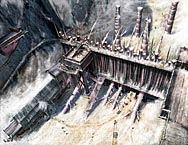 |
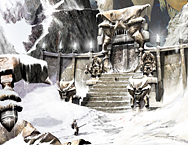 |
| concept: Rob Johnson | concept: Rob Johnson | concept: Rob Johnson |
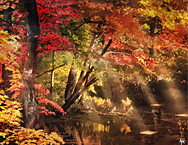
| 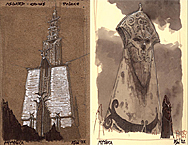 |
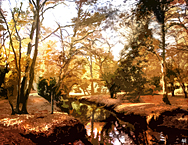 |
| concept: Michael Cahill | concept: Anthony Waters | concept: Michael Cahill |
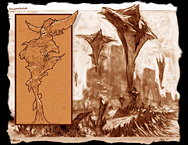
| 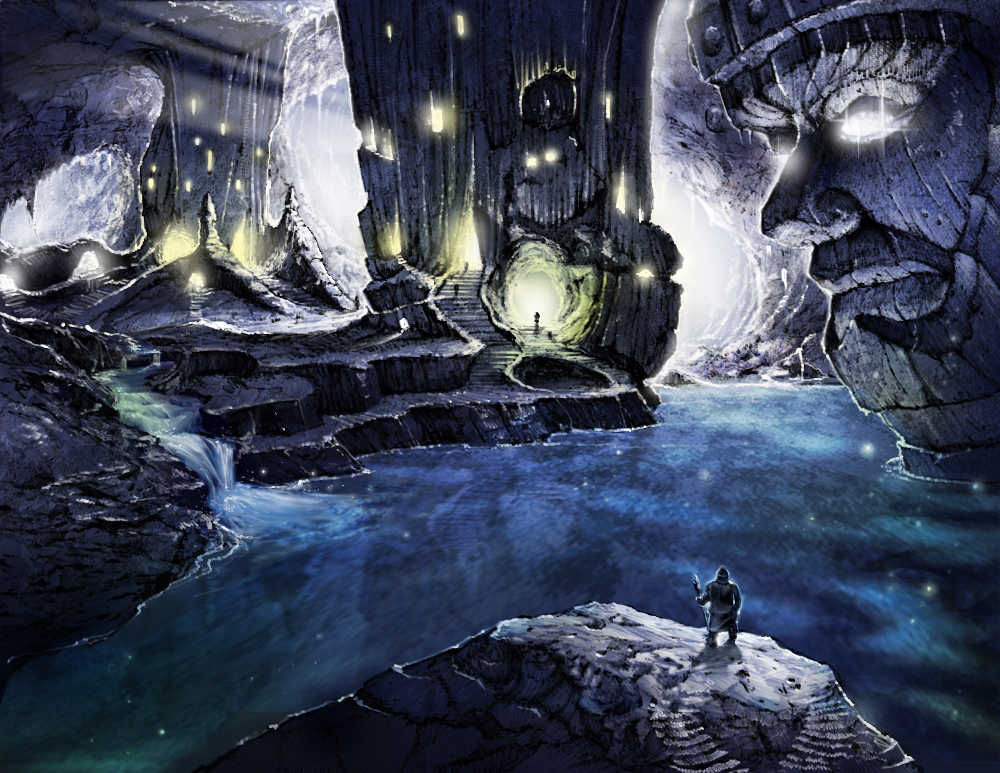 |
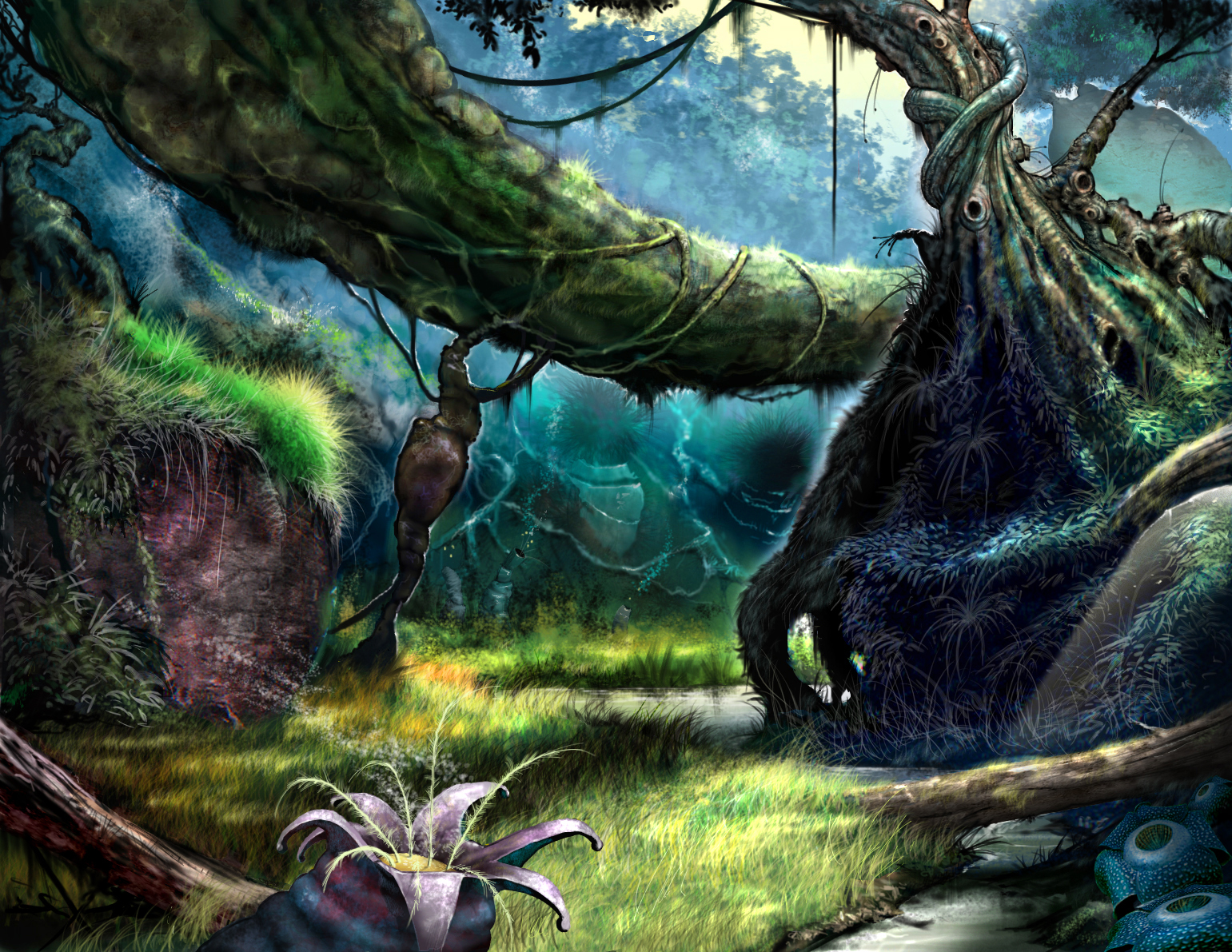 |
| concept: Anthony Waters | concept: Rob Johnson | concept: Rob Johnson |
epic heroes
The designers had plans for several highly unique roles, each one needing to look unique, work on a variety of body shapes, and allow for character progression over time. I worked very closely with Sam Wood on the concepts and Leigh Kellogg on the technical direction to devise a plan for swappable components designed within a set of shapes that created unique silhouettes for each role. For example, Pyromancer gear would only work with other Pyromancer gear but the combinations of just 3 completely componentized outfits could easily turn into hundreds of player variants. Our biggest challenge was to make the characters as interesting to look at from the back (where the player would spend most of their time looking) as from the front, but Sam is a master at integrating big ideas into a beautiful plan. Some of the more striking designs are below.
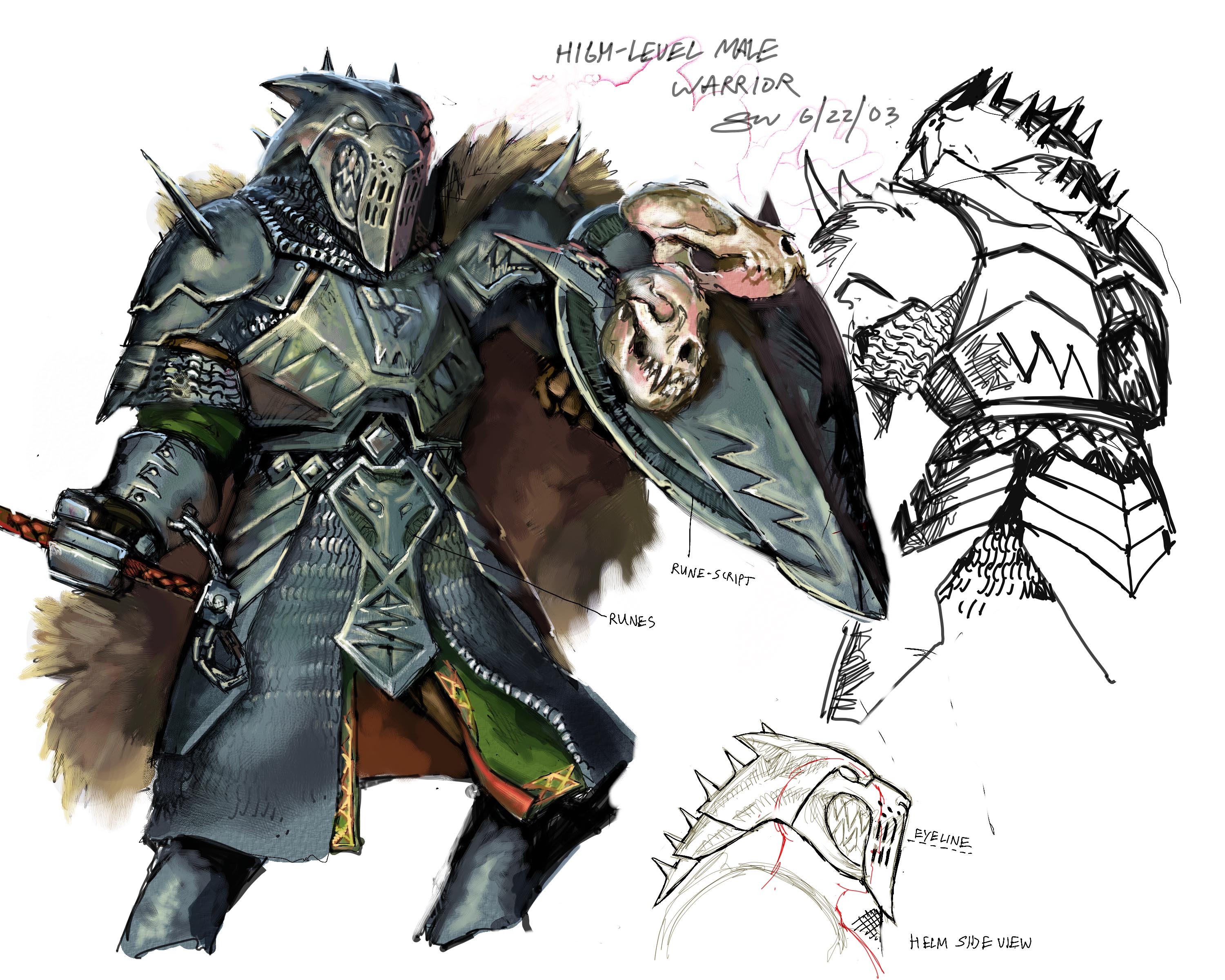 |
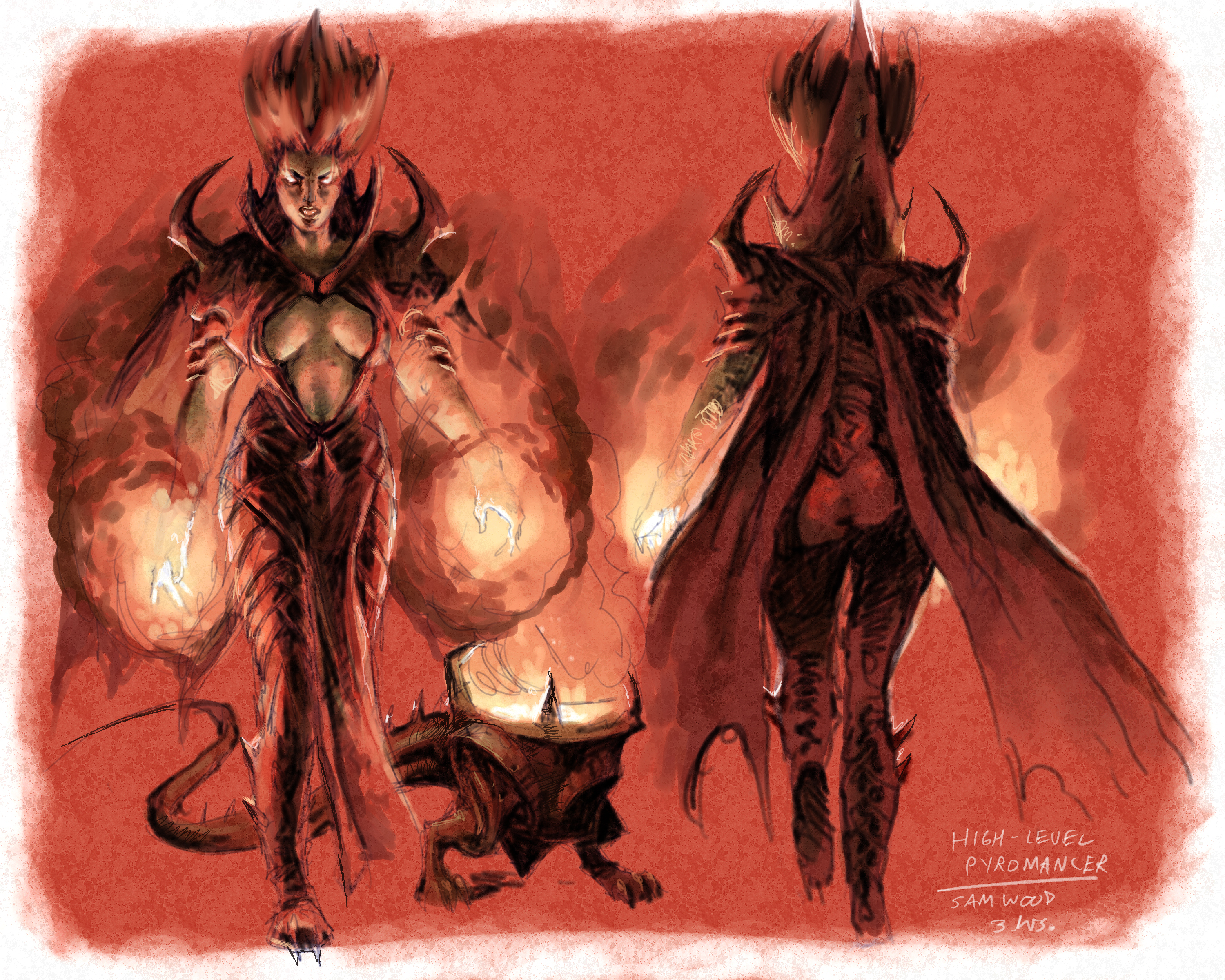 |
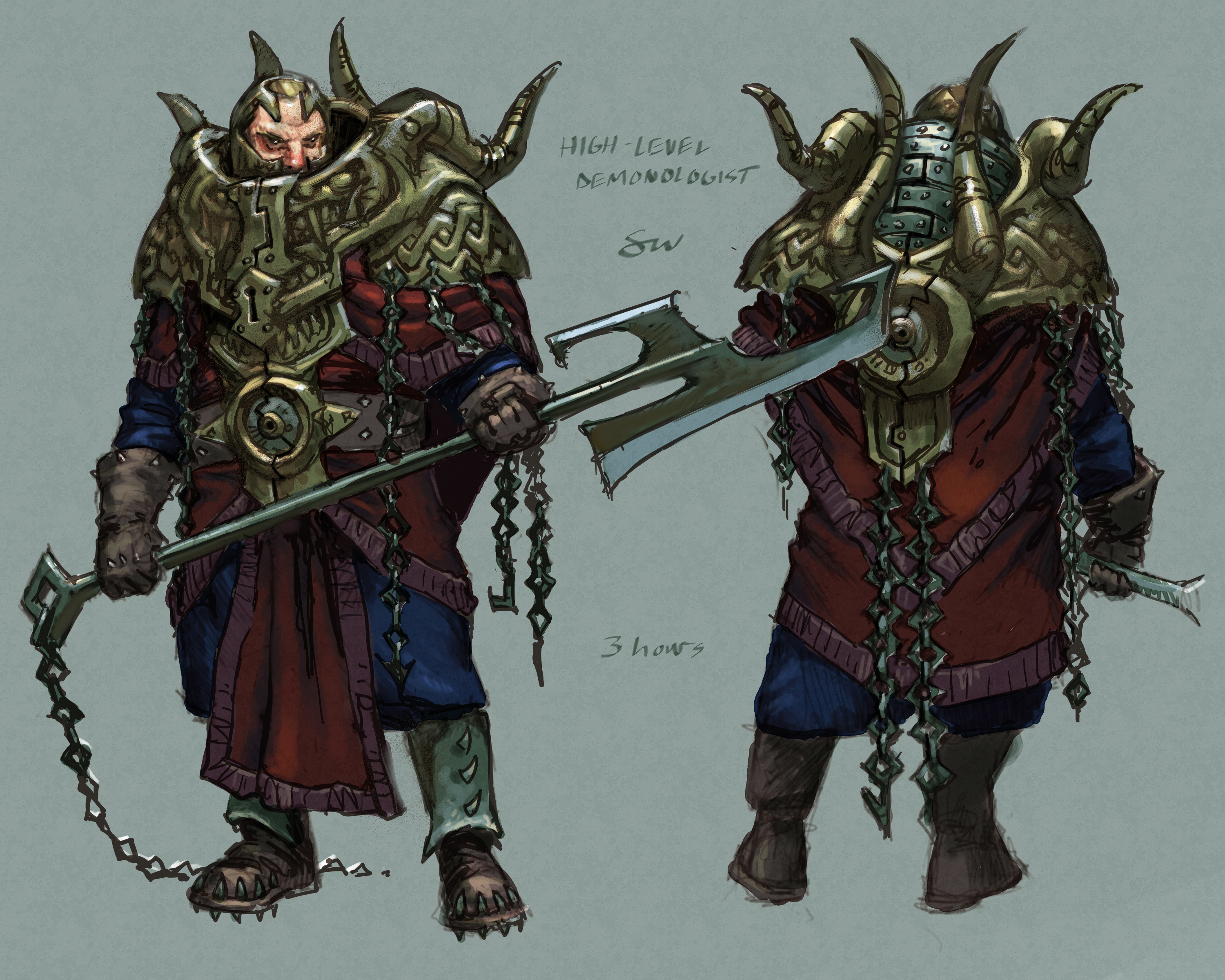 |
| concept: Sam Wood | concept: Sam Wood | concept: Sam Wood |
|---|---|---|
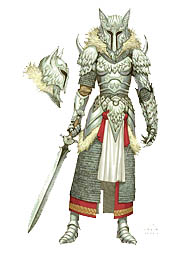 |
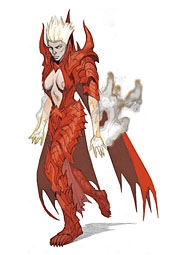 |
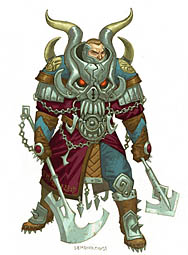 |
| concept: Steven Prescot | concept: Steven Prescot | concept: Steven Prescot | 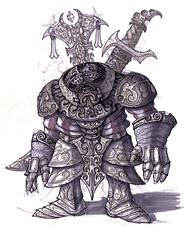 |
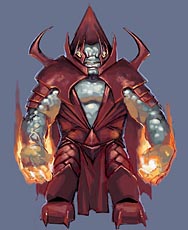 |
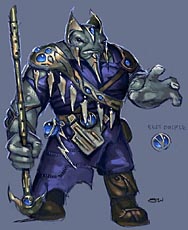 |
| concept: Greg Onychuk | concept: Sam Wood | concept: Sam Wood |
monster mayhem
When it came to monster design it was important to put our own unique stamp on the appearance and personality of the beasts. Whether savage wildlife in Vanaheim or frozen ice trolls in Jotunheim, we made it our point to create unique interpretations that you would only find in Mythica. John Shroades’ inventive take on the Fire Giants really served as a catalyst for everything else, but from those early beginnings we designed over 200 completely original creatures, many with a system of interchangeable armor bits or accessories. A brief selection follows.
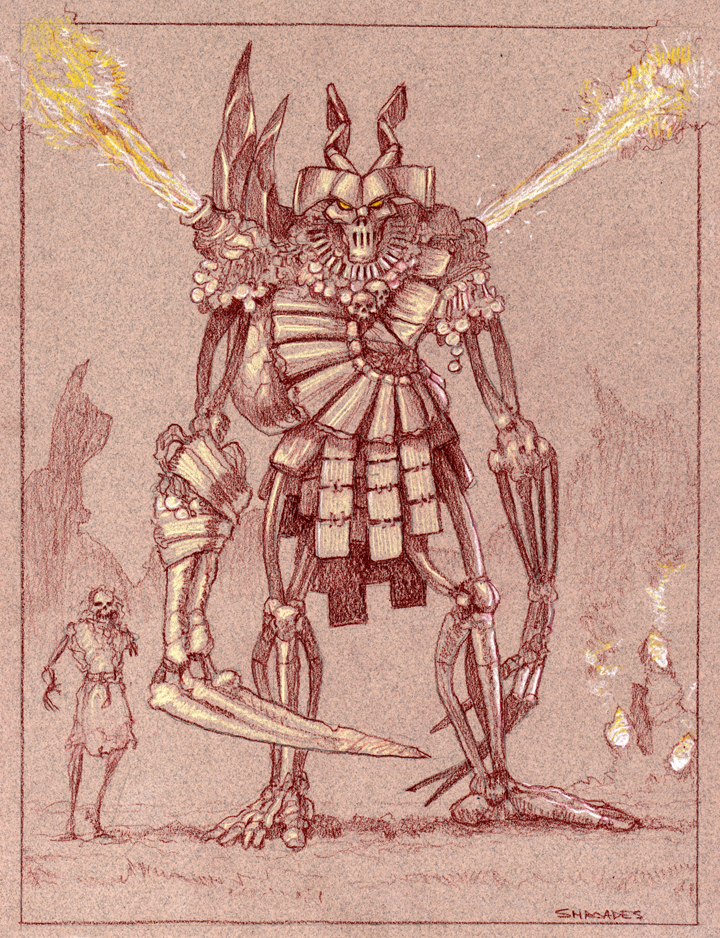 |
 |
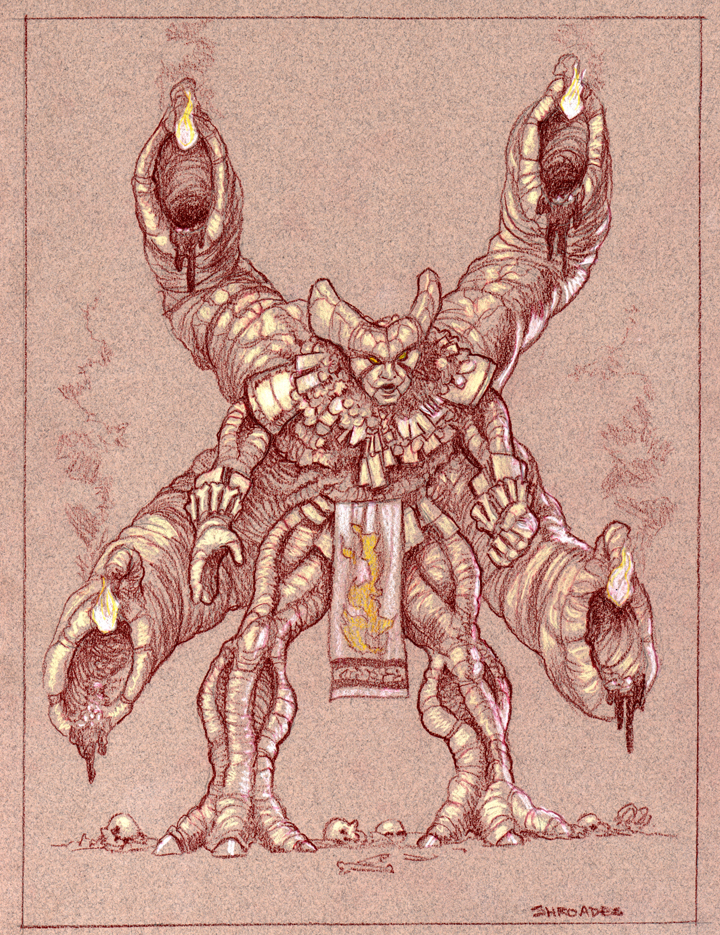 |
| concept: John Shroades | concept: John Shroades | concept: John Shroades |
|---|---|---|
 |
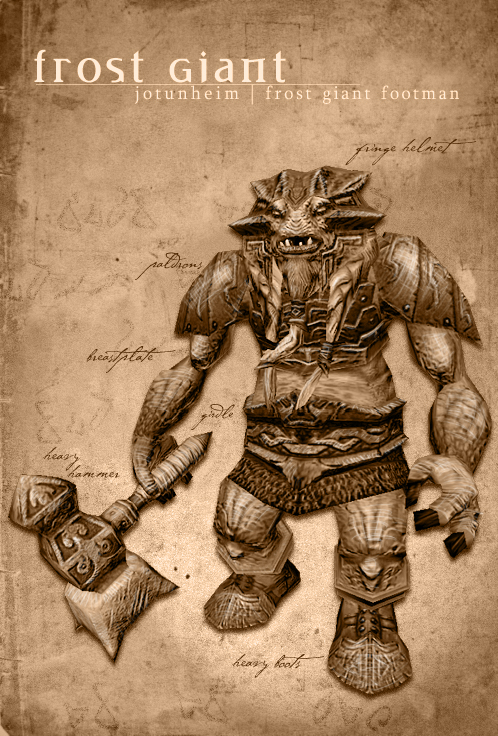 |
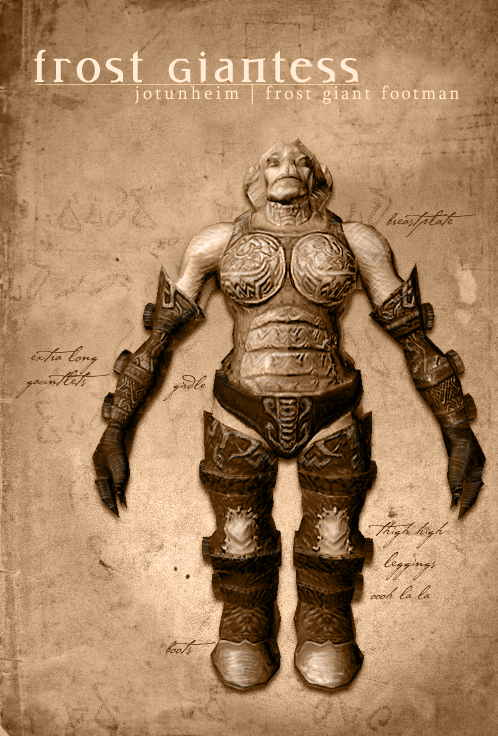 |
| concept: Greg Onychuk | concept: Greg Onychuk | concept: Greg Onychuk |
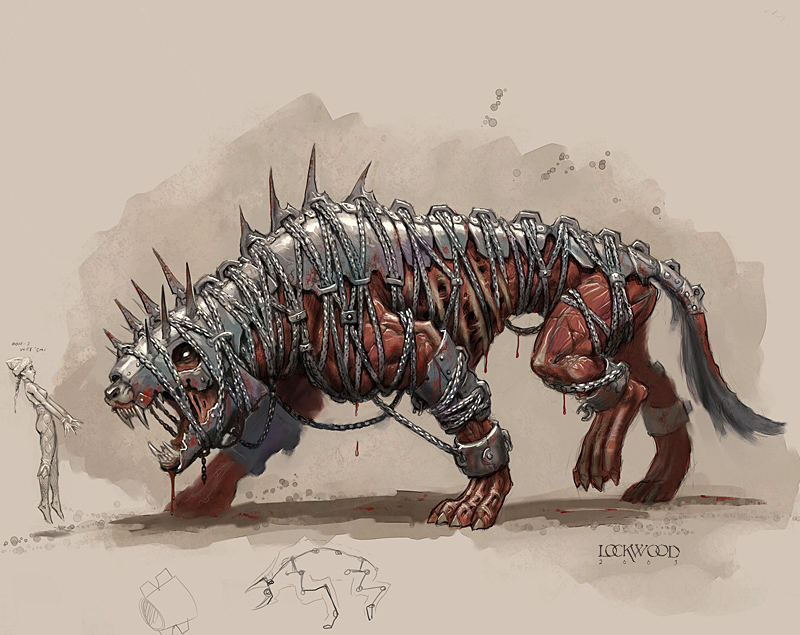 |
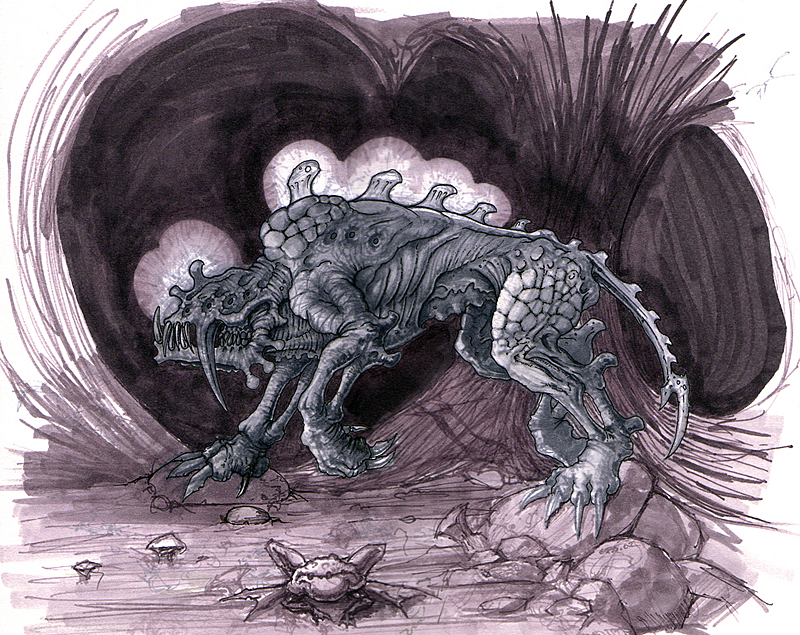 |
 |
| concept: Todd Lockwood | concept: Greg Onychuk | concept: Brian Snoddy |
signature weapons
No game about fallen viking heroes would be complete without a vast arsenal of brutal and powerful weapons. My direction to Brian Snoddy was simple: these are godly weapons, so embellish the heck out them. (A nice collection of carving samples from Heddal Stavkirke helped as well). Here’s just a few…

|  |
 |
| concept: Brian Snoddy | concept: Brian Snoddy | concept: Brian Snoddy |
|---|
Mood and Tone
But even the best concept artist needs guidance. This is where I borrowed a couple pages from the ad/marketing folks by writing creative briefs and crafting mood boards. Depending on the relationship with the artist the brief might be as long as few paragraphs or as short as a descriptive name. Moodboards were assembled from whatever reference material is appropriate…some times photographs, sometimes paintings, and, as the game progressed, screenshots of pertinent assets. The selections were carefully editorialized to represent a consistent use of color, tone, and shape, which provided a fertile ground for creative interpretation. [I intend to post samples here but need to locate some]
Once concepts meet my approval and satisfy the needs of design, they’re placed in the production queue. And that’s where things get really cooking.
asset creation on an epic scale…
MMOs are big. You know how Douglas Adams goes on and on about space and how big it is? Well, he wrote that before we had MMOs. MMOs are big. And in order to support them you need to be constantly thinking about how to build on top of things and expand things and not break all the things that were built in the past. You need to plan carefully so that you can leverage every investment you make in asset creation because you or the team maintaining the game will have to live with your decisions for years to come. You’re also dealing with a game that is consumed over hundreds of hours (not tens like typical single player games) so it is important to create systems that result in additional content through new combinations of existing parts. While a team of 80 can build 12 hours of AAA content, nobody wants a team of 800 building content for 120 hours of play. This is a classic case for working smarter not harder.
One of the most significant ways I helped the team work smarter was to translate the goal of creature archetypes, subtypes, and multi-types into an actionable plan. Recognizing that animation was one of our biggest expenses (both in terms of content production and performance cost) I worked diligently to ensure that the hundreds of planned creatures would work on only a dozen skeletons.
 |
 |
 |
| concept: Sam Wood | concept: Sam Wood | concept: Sam Wood |
|---|
We also designed our humanoids to accept armor as attachments. That way one creature (or character) could be accessorized a number of ways to create a tremendous variety of assets for only slightly more cost than producing one. This approach necessitated coordination and support from programming as the method required an in-engine mesh and texture merging solution to keep the draw calls under control. But the cost:benefit ratio was clearly balanced on the benefit side, and, thus, dozens of assets became thousands.
 |
 |
 |
| archetype | armor set | subtype |
|---|
E3 2007 interview with Corey Dangel. 9 minutes.




 Corey Dangel has been an Art Director for 15 years. He spent the last four years establishing the visual direction for The Agency, a critically anticipated title for PC and PS3. Prior to SOE, Corey spent nearly a dozen years living the life of an elite art director in the games division of Microsoft. Focused principally on online games, Corey spent his first tour of duty working on several groundbreaking titles including the Internet Gaming Zone, Fighter Ace, and Asherons Call. A two-year hiatus sent Corey to Cavedog/Humongous Entertainment where he helped bring the Total Annihilation franchise to the online world. A return to Microsoft had him working on a variety of PC and Xbox games, most notably Dungeon Siege, Psychonauts, and Mythica. Corey attended Western Washington University, where he graduated with a Bachelor of Science in Visual Communication. Outside of work, Corey pretends to be a rock star in his circularly referential band, AgentC. He makes a fine martini, too.
Corey Dangel has been an Art Director for 15 years. He spent the last four years establishing the visual direction for The Agency, a critically anticipated title for PC and PS3. Prior to SOE, Corey spent nearly a dozen years living the life of an elite art director in the games division of Microsoft. Focused principally on online games, Corey spent his first tour of duty working on several groundbreaking titles including the Internet Gaming Zone, Fighter Ace, and Asherons Call. A two-year hiatus sent Corey to Cavedog/Humongous Entertainment where he helped bring the Total Annihilation franchise to the online world. A return to Microsoft had him working on a variety of PC and Xbox games, most notably Dungeon Siege, Psychonauts, and Mythica. Corey attended Western Washington University, where he graduated with a Bachelor of Science in Visual Communication. Outside of work, Corey pretends to be a rock star in his circularly referential band, AgentC. He makes a fine martini, too.






